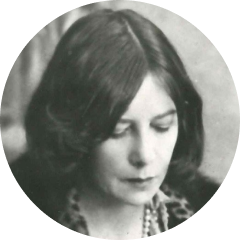Vivien(ne) Eliot, née Haigh-Wood
(1888–1947)
Vivien(ne) Eliot, née Haigh-Wood (1888–1947): T. S. Eliot’s first wife. Born in Bury, Lancashire, on 28 May 1888, ‘Vivy’ was brought up from the age of three in Hampstead. After meeting TSE in company with Scofield Thayer in Oxford early in 1915, she and TSE hastened to be married just a few weeks later, on 26 June 1915. (TSE, who was lodging at 35 Greek Street, London, was recorded in the marriage certificate as ‘of no occupation’.) She developed close friendships with Mary Hutchinson, Ottoline Morrell and others in TSE’s circle. Despite chronic personal and medical difficulties, they remained together until 1933, when TSE resolved to separate from her following his academic year in America. She was never to be reconciled to the separation, became increasingly ill, and in 1938 was confined to a psychiatric hospital, where she died (of ‘syncope’ and ‘cardiovascular degeneration’) on 22 January 1947. She is the dedicatee of Ash-Wednesday (1930). She published sketches in the Criterion (under pseudonyms with the initials ‘F.M.’), and collaborated on the Criterion. See Michael Karwoski, ‘The Bride from Bury’, Lancashire Life, Mar. 1984, 52–3; Carole Seymour-Jones, Painted Shadow: The Life of Vivienne Eliot (2001); Ken Craven, The Victorian Painter and the Poet’s Wife: A biography of the Haigh-Wood Family (e-book, 2012); Robert Crawford, Young Eliot: From St Louis to ‘The Waste Land’ (2015); and Ann Pasternak Slater, The Fall of a Sparrow: Vivien Eliot’s Life and Writings (2020).
